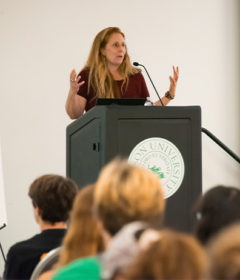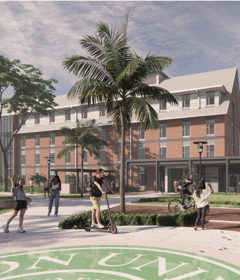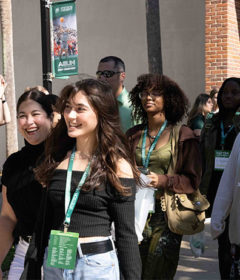Former Chief Historian: National Parks Need More Funding, Preservation
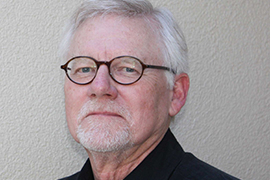
Choosing a favorite national park for Dwight Pitcaithley would be like a Picasso selecting a favorite painting.

But when pushed, the 72-year-old former chief historian for the National Park Service acknowledges there’s one special place in his heart that’s known for its breathtaking view and ever-changing palette of color.
“Aesthetically, it’s the Grand Canyon from the north rim. It’s so spectacular,” he said. “But Carlsbad also has a soft spot in my heart.”
The Carlsbad Caverns National Park near his childhood home in southeastern New Mexico is where Pitcaithley, Ph.D., who will visit Stetson University campuses in Tampa and DeLand next week, first went to work part-time in 1963-64 as a high-school student, cleaning toilets.
His jobs greatly improved over time.
After a stint in the Marine Corps, he returned to Carlsbad as a tour guide, before heading off to college and obtaining a bachelor, masters and doctorate degree in history.
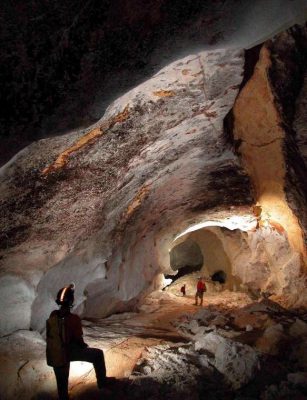
“It’s where I got my feet wet,” he said of Carlsbad Caverns National Park. “But I never intended to make (the park service) my career.”
Yet, he did. He landed his first full-time job as a research historian in 1976, and ultimately was promoted in 1995 to chief historian, until retiring 10 years later.
In that job, Dr. Pitcaithley focused on issues relating to the historic preservation and public education at more than 400 national parks, monuments and historic sites, about 220 that he’s visited. Every state has them. Florida has 11.
“I’m little more than halfway. But I have no intention of visiting them all,” he said, laughing. “Some people have.”
Pitcaithley currently is an adjunct history professor at New Mexico State University and a visiting Woodrow Wilson Fellow, specializing in public history and the Civil War.
“My public talks are different. Some play up my park-service experience or my Civil War expertise. It varies,” he said. “Obviously, the schools invite me for my park experience. (At Stetson) I will talk about the history of the parks and the state they are in today.”
It’s a state that displeases him. He’s concerned that parks are deteriorating from neglect and Congress isn’t allocating enough money for proper upkeep and the modernization of outdated exhibits.

“Yellowstone (the first park) in 1916 was in the middle of nowhere. The founding fathers (of the park service) never imagined any preservation was needed,” he said. “Parks weren’t threatened by air and water pollution. But as places filled in, surrounded by urban areas, they became threatened … It’s a crisis the parks are in.”
At Stetson’s DeLand campus, Pitcaithley will visit classrooms in a number of departments, take a field trip to local historic and natural sites, meet informally with students and hold several lectures.
“The National Park Service After 100 Years: A Historian’s Reflections on Mission, Challenges and Opportunities” is scheduled for Oct. 10 at 7 p.m. in the Marshall & Vera Lea Rinker Welcome Center and is open to the public. Cultural credit is available for students.
Pitcaithley also will participate in a “Deliberating Things that Matter” session for Stetson students and community members focusing on the subject of “Monuments, Memorials and Public Memory” on Oct. 12 at 3 p.m. in the duPont-Ball Library lounge.
“We are thrilled to have Dr. Pitcaithley coming to campus to share his wealth of experience and knowledge about the National Park Service, about the role of history in public spaces, and about the intersections between public places and parks and national identity,” said Emily Mieras, Ph.D., chair of Stetson’s Department of History, which is hosting the visit.
Pitcaithley’s visit is sponsored by the Dean’s Office of the College of Arts and Sciences. Co-sponsors include the Gillespie Museum, the Institute for Water and Environmental Resilience, and the departments of Political Science, Economics, Environmental Science and Studies, and Teacher Education.
-Ray Weiss

